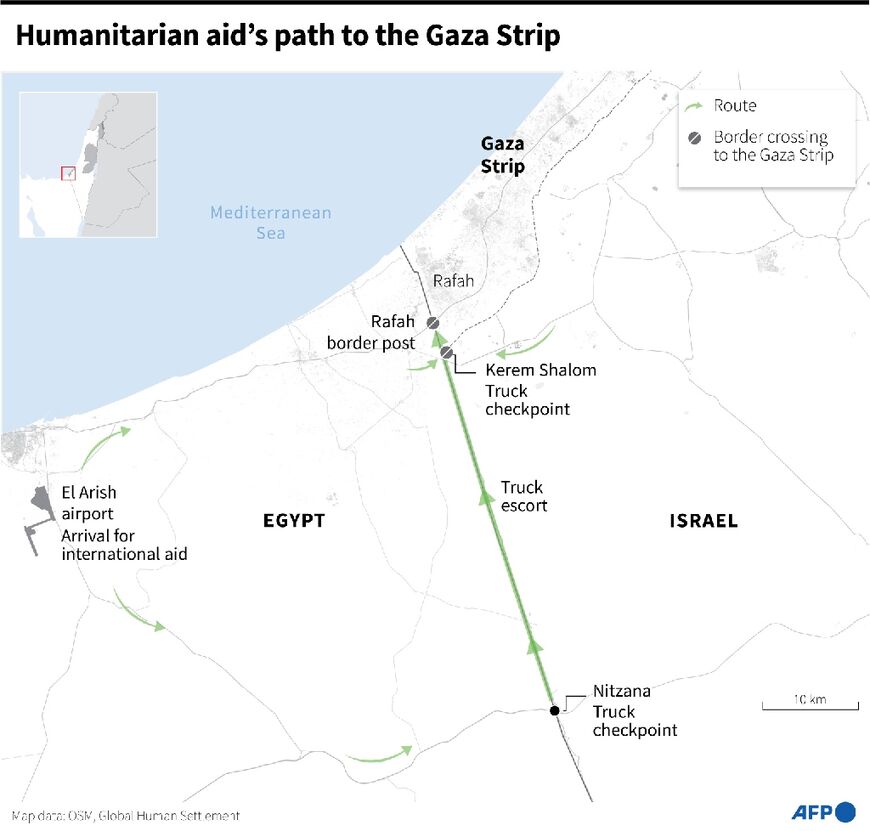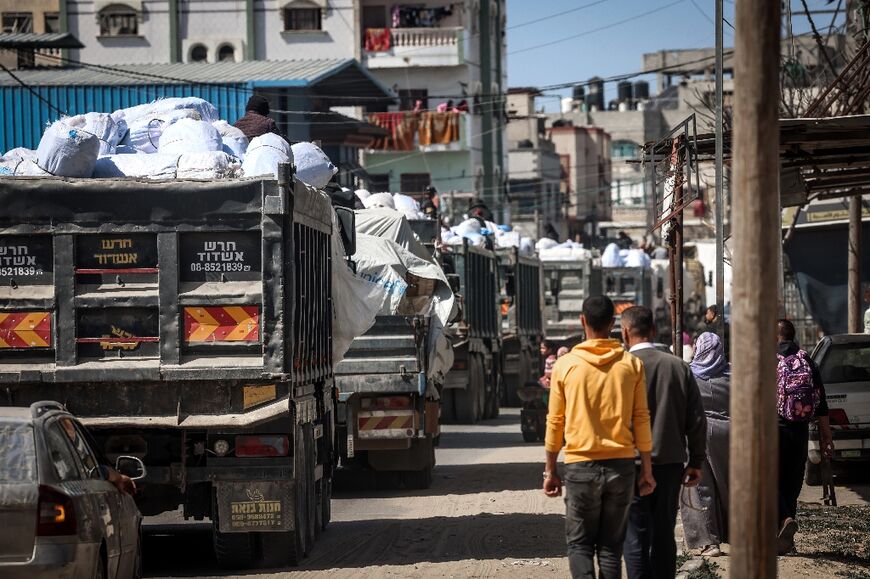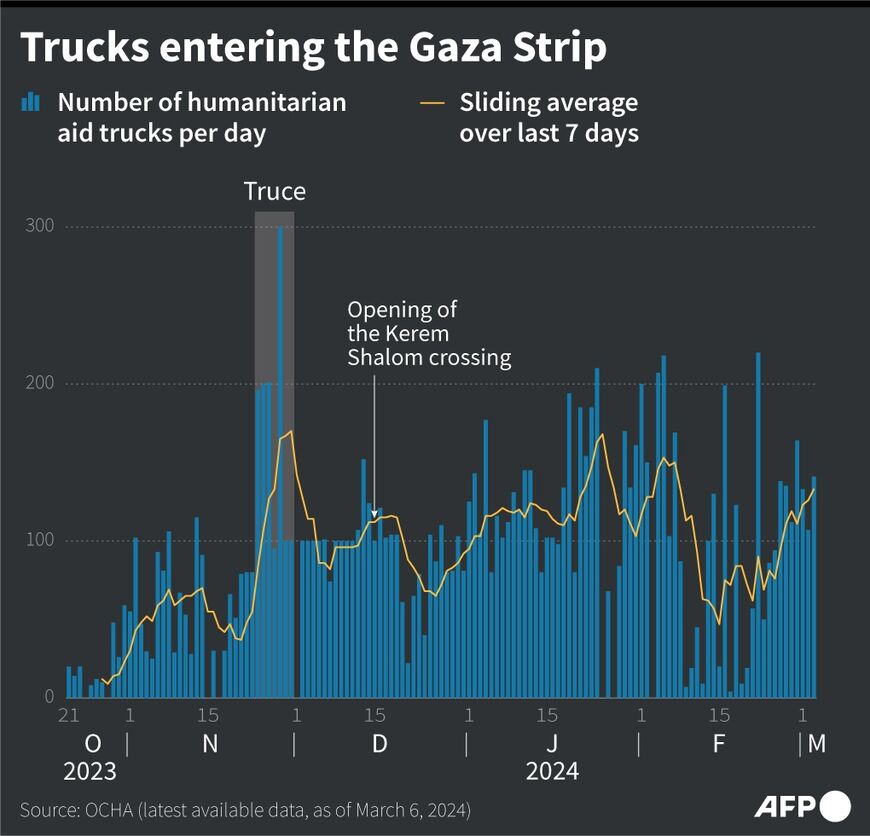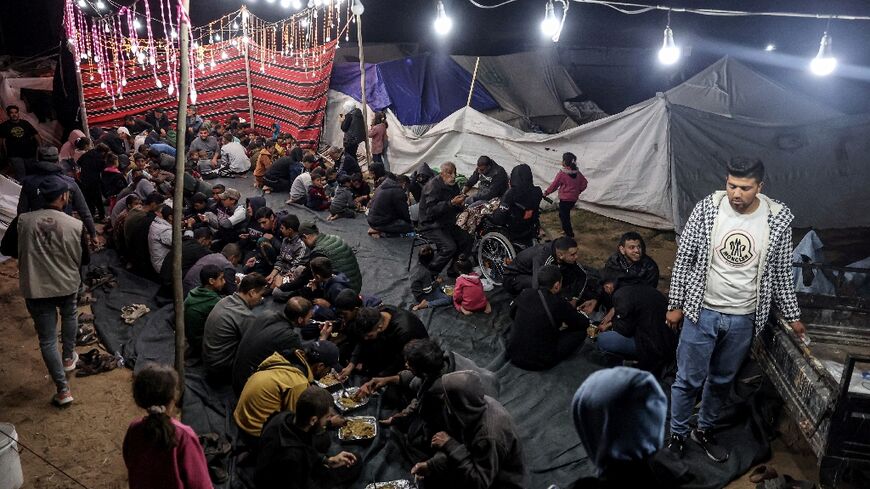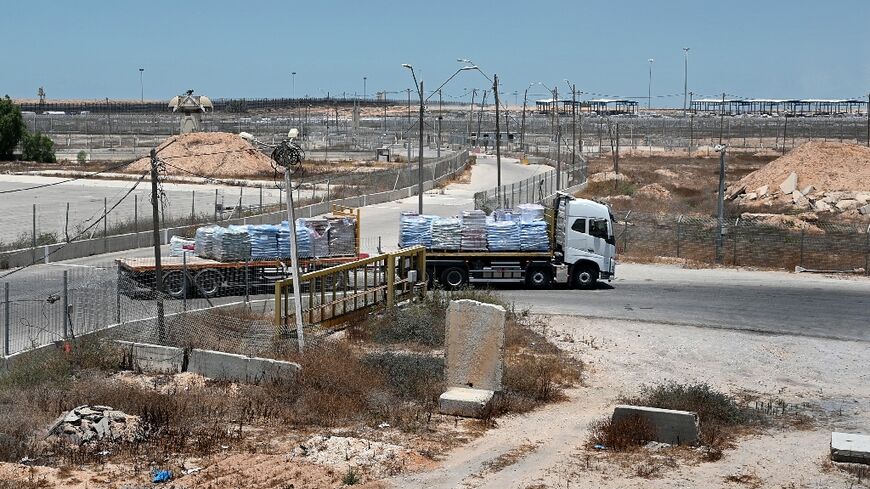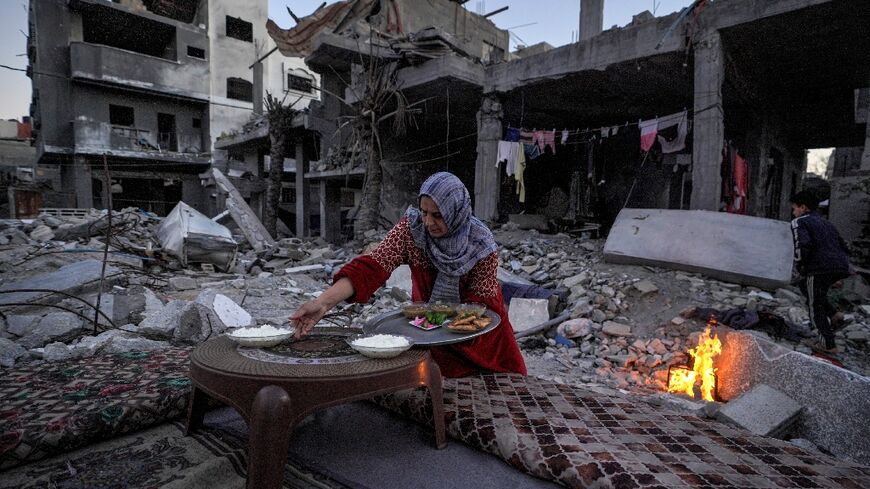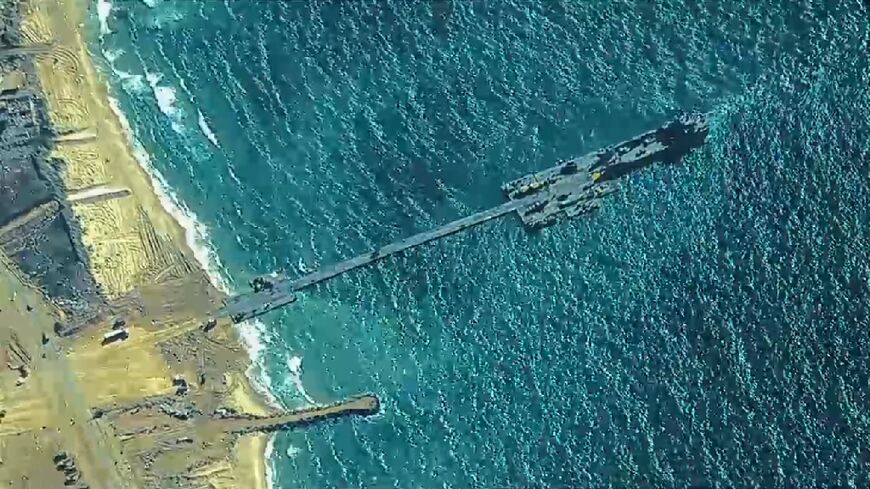How humanitarian aid reaches war-ravaged Gaza
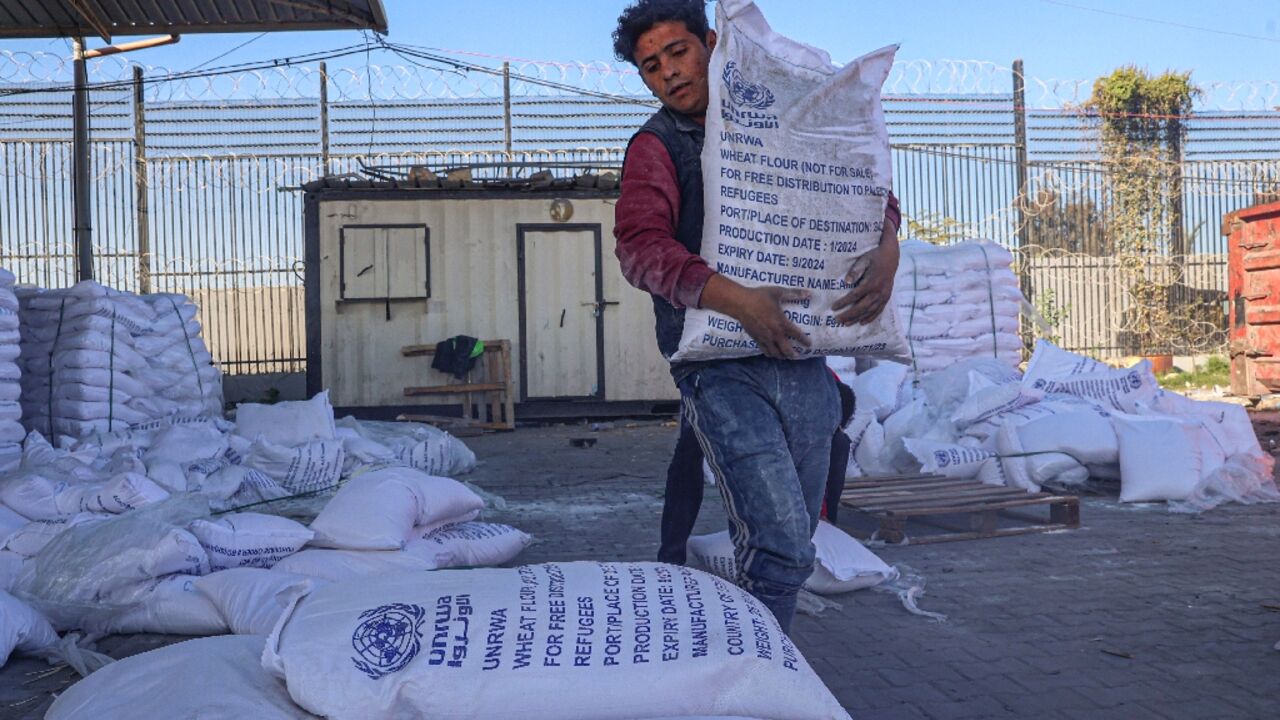
Most aid bound for war-ravaged Gaza arrives overland from neighbouring Egypt but Israel and UN agencies clash on how much actually makes it inside the Palestinian territory.
The volume of aid entering Gaza by road each day through the Rafah crossing from Egypt is insufficient, aid workers say, blaming rigorous Israeli inspections at least in part.
With no truce in sight to pause the Israel-Hamas war, here is a look at how aid currently reaches Gaza and what alternatives are being weighed to alleviate the crisis in the besieged Palestinian territory.
- First stop: Egypt -
Most Gaza-bound goods arrive by sea in the Egyptian ports of Port Said or El-Arish.
El-Arish is closer to Gaza but also smaller, and was quickly overwhelmed by the volume of shipments arriving, aid groups say.
Israeli authorities, who have blockaded Gaza since Hamas took sole control of the Palestinian territory in 2007, require that all aid entering Gaza be inspected by them.
The main inspection area for goods is Kerem Shalom in southern Israel, not far from the Rafah crossing.
Another inspection area exists in Nitzana, on the Israeli-Egyptian border about 40 kilometres (25 miles) to the southeast.
- Long wait for trucks -
Before reaching the inspection areas, many aid trucks wait for days at the Egyptian side of the Rafah checkpoint.
Once inspected, goods that are cleared to enter by Israel are unloaded from the mostly Egyptian trucks in the zone between Egypt and Gaza.
The supplies are then loaded onto separate vehicles, driven by Gazans working for aid groups, for distribution inside the Palestinian territory.
Cumbersome screenings are a major reason shortages are so glaring, aid workers say.
Israel blames a lack of sufficient capacity on the Palestinian side to distribute the aid once it gets in.
In recent days, Israel took issue with UN figures on the number of trucks entering Gaza, accusing UN Palestinian refugee agency UNRWA of counting only trucks it had processed, not those processed by Israel.
- Heading north -
For months, aid groups and foreign governments including top ally the United States have urged Israel to reopen border crossings into the north of Gaza, where the humanitarian crisis is most severe.
Israel announced that six World Food Programme (WFP) aid trucks entered the north directly from its territory in early March, in what it described as a "pilot project".
The trial was not extended, however, and aid convoys bound for northern Gaza must travel the length of the territory negotiating battlegrounds, Israeli bombardments and mobs of desperate civilians.
In March, the WFP said one of its convoys had been blocked by Israeli forces inside Gaza before it could reach the north.
After turning back, the agency said the convoy was looted by a "crowd of desperate people".
According to Israeli authorities, 28 trucks reached northern Gaza on Wednesday.
They were among 298 trucks that Israel said entered Gaza on Wednesday, still far below the number aid groups say is needed to sustain the territory's 2.4 million people.
Under pressure from the international community, Israel announced on April 5 that it would open a new crossing directly into northern Gaza, without specifying its exact location or when it would open.
- By air and by sea -
In a bid to get round the logjam, several Arab and European governments, later joined by Washington, began carrying out aid airdrops over Gaza, particularly the north.
But the airdrops have proved controversial, with multiple deaths among civilians on the ground who were crushed by aid crates when parachutes failed to open, or drowned trying to reach others accidentally dropped in the sea.
There has also been an attempt to establish a maritime aid corridor from the Mediterranean island of Cyprus but it has largely fizzled out after seven aid workers were killed by Israeli fire on April 1 as they unloaded food from the second flotilla to make the crossing.
Even though the Cypriot government insists it has not given up on the aid corridor, no further crossings are currently planned after the US and Spanish charities behind the first two suspended their operations in the region.
UN agencies have in any case said repeatedly that road convoys are the only practical way of meeting Gaza's needs.


